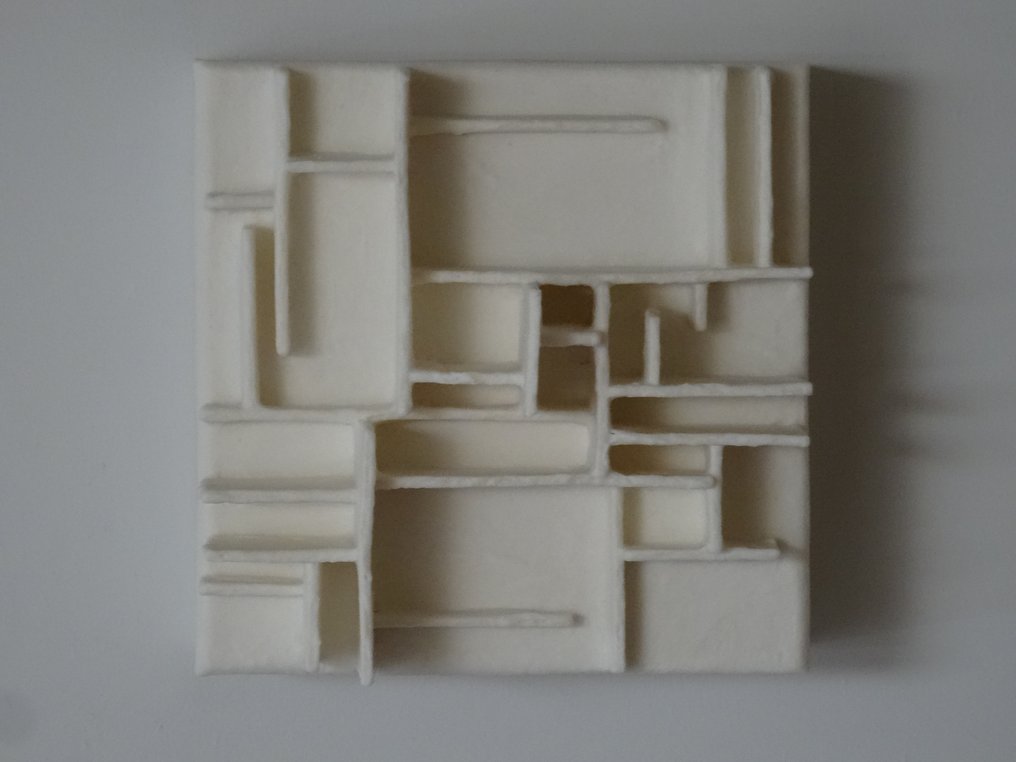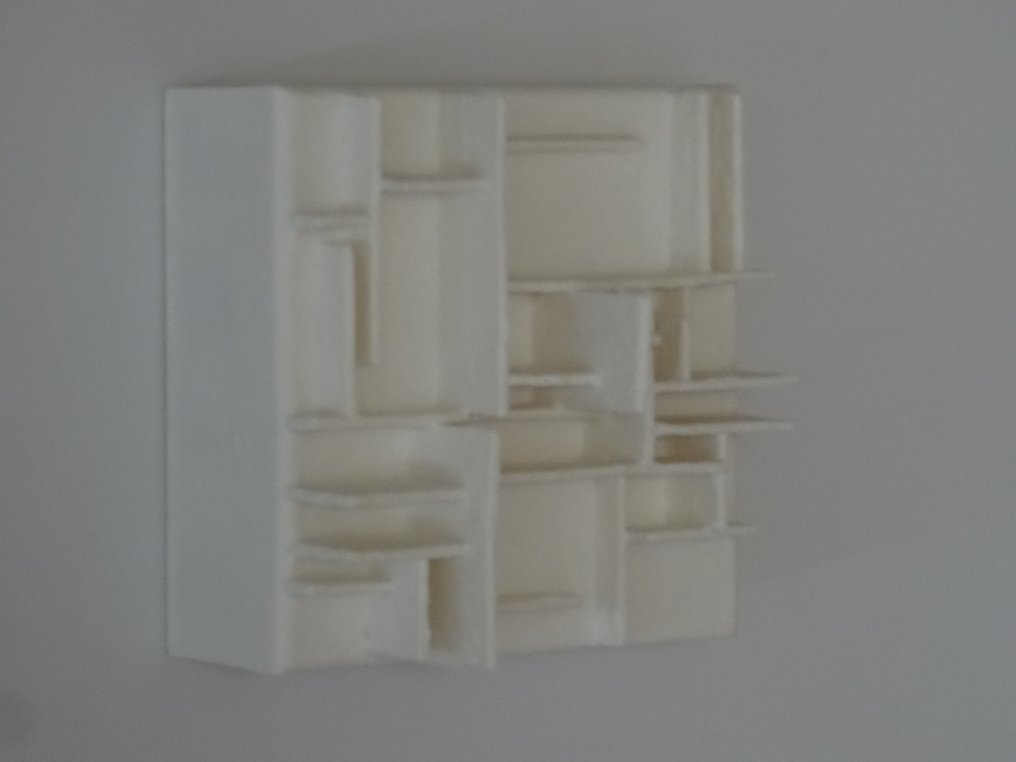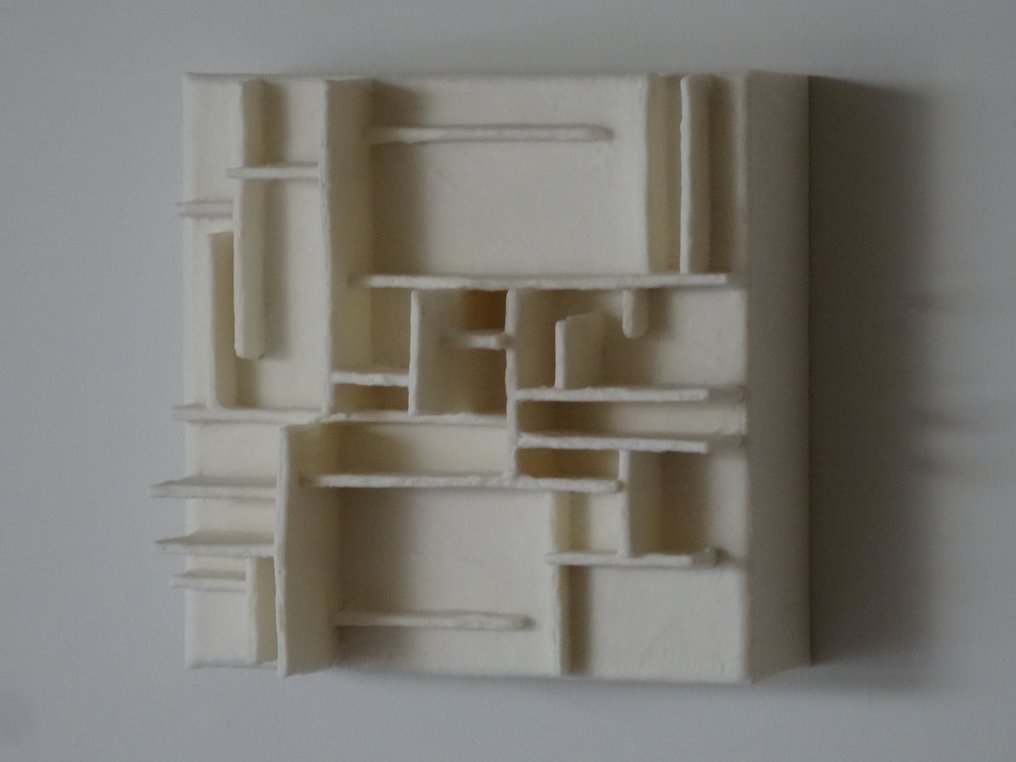
Henny - Familie Beer
Catawiki actualiza constantemente su tecnología. Actualmente, estás utilizando un navegador obsoleto. Para optimizar tu experiencia de navegación, actualiza tu navegador.
Puedes configurar tus preferencias de cookies utilizando los botones de abajo. Puedes actualizar tus preferencias, retirar tu consentimiento en cualquier momento y ver una descripción detallada de los tipos de cookies que usamos nosotros y nuestros socios en nuestra Política de cookies.
N.º 84487433





Het kunstwerk is gemaakt van porselein, oxiderend gestookt op 1240 C.
Aan de achterzijde zit een uitsparing waaraan het werk opgehangen kan worden. Op de eerste vijf foto's met de lichte achtergrond is het object hangend afgebeeld.
Het betreft een uniek handgemaakt object.
De signatuur, in relief, is zichtbaar op de foto's.
De kunstenaar heeft dit werk met twee porseleinen applicaties gesigneerd, een is zijn voornaam en de eerste letter van zijn achternaam, op de andere staan twee Japanse karakters, Raku en Yakimono.
Bij de verzending zal deze kist “box in box” verpakt worden, waarbij de tussenruimte met schokabsorberend milieuvriendelijk materiaal wordt gevuld.
Hans Meeuwsen (1954, The Netherlands) graduated from the Visual Arts Academy in Tilburg to initially become a teacher in visual arts at an upper secondary school. His main specialism was drawing, but he accidentally discovered the potential of clay as a visual arts medium. Rolling, pressing and cutting provided him with little flat clay squares that he used to built cubic shapes looking like hermetically closed cells.
A few years later he received national and international recognition with exhibitions in The Netherlands and Germany. Important works from that time include towers, pyramids and other constructions, some being pure geometric abstractions, others being interpretations of the mythical Tower of Babel. Hans further developped his ceramic skills during residencies at the European Ceramic Work Centre in The Netherlands and working periods in New Zealand, Lithuania and the Japanese Island Hirado.
During the most recent years he has further developped his ceramic skills and works with creamy white wafer-thin slices of porcelain that are mounted into cubes or pyramids. By stacking these geometric shapes in repetitive patterns he creates sculptures that are reminiscent of the Dutch Zero-movement and in particular the works by Jan Schoonhoven, but in the end clearly bears the artists’ own signature. He applies his decades-long experience to create a dialogue between inner and outer space, between geometric and organic, between order and chaos.
Hans Meeuwsen is a “Prix de Rome” nominee of 1987 and a Fletcher Challenge Ceramic merit award winner of 1992 and ever since then his work has found its way to many national and international collections.
Het kunstwerk is gemaakt van porselein, oxiderend gestookt op 1240 C.
Aan de achterzijde zit een uitsparing waaraan het werk opgehangen kan worden. Op de eerste vijf foto's met de lichte achtergrond is het object hangend afgebeeld.
Het betreft een uniek handgemaakt object.
De signatuur, in relief, is zichtbaar op de foto's.
De kunstenaar heeft dit werk met twee porseleinen applicaties gesigneerd, een is zijn voornaam en de eerste letter van zijn achternaam, op de andere staan twee Japanse karakters, Raku en Yakimono.
Bij de verzending zal deze kist “box in box” verpakt worden, waarbij de tussenruimte met schokabsorberend milieuvriendelijk materiaal wordt gevuld.
Hans Meeuwsen (1954, The Netherlands) graduated from the Visual Arts Academy in Tilburg to initially become a teacher in visual arts at an upper secondary school. His main specialism was drawing, but he accidentally discovered the potential of clay as a visual arts medium. Rolling, pressing and cutting provided him with little flat clay squares that he used to built cubic shapes looking like hermetically closed cells.
A few years later he received national and international recognition with exhibitions in The Netherlands and Germany. Important works from that time include towers, pyramids and other constructions, some being pure geometric abstractions, others being interpretations of the mythical Tower of Babel. Hans further developped his ceramic skills during residencies at the European Ceramic Work Centre in The Netherlands and working periods in New Zealand, Lithuania and the Japanese Island Hirado.
During the most recent years he has further developped his ceramic skills and works with creamy white wafer-thin slices of porcelain that are mounted into cubes or pyramids. By stacking these geometric shapes in repetitive patterns he creates sculptures that are reminiscent of the Dutch Zero-movement and in particular the works by Jan Schoonhoven, but in the end clearly bears the artists’ own signature. He applies his decades-long experience to create a dialogue between inner and outer space, between geometric and organic, between order and chaos.
Hans Meeuwsen is a “Prix de Rome” nominee of 1987 and a Fletcher Challenge Ceramic merit award winner of 1992 and ever since then his work has found its way to many national and international collections.








